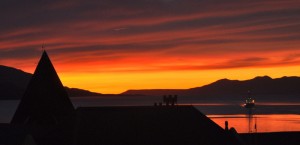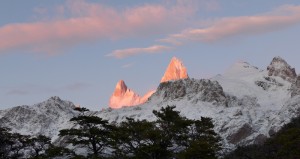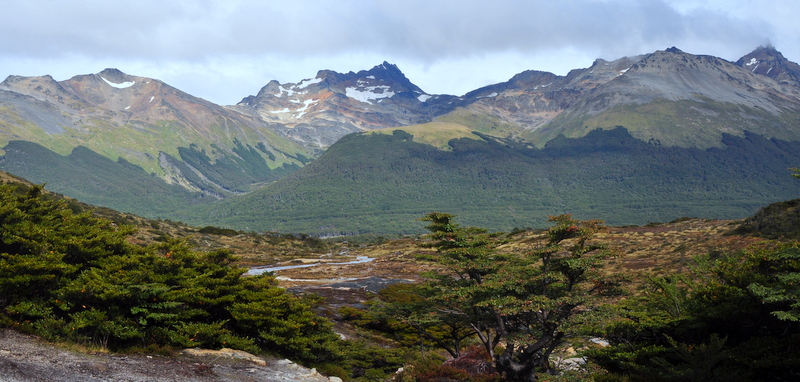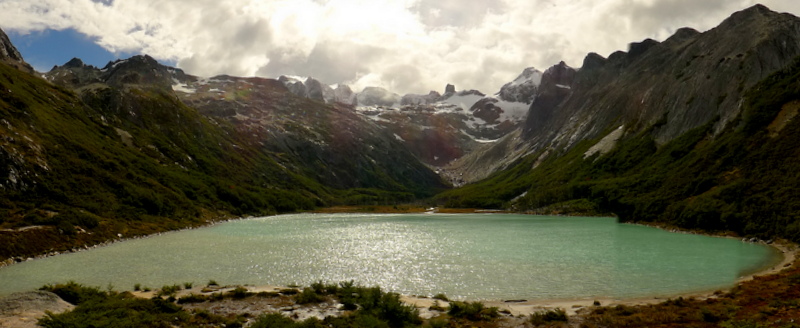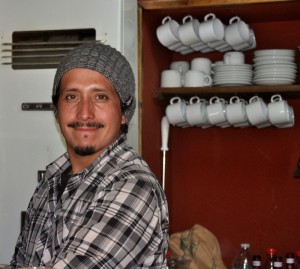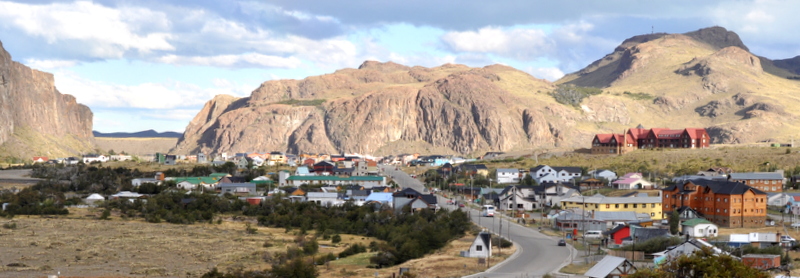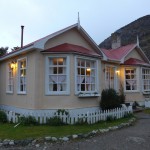Ushuaia is the ‘Capital of the Antarctic‘ as most expeditions to the Antarctic depart from here. I was here briefly at the end of my first polar journey in 1999. Before re-boarding MV Ortelius, I have a good rest in Argentina and a most enjoyable hike in the Los Glaciares Park in the Patagonian Ice Field. March 13 Friday: Ushuaia, Tierra del Fuego, Argentina (54º48‘,68º18‘W)
Tierra del Fuego (Land of Fire) is an archipelago off the southern tip of the South American mainland, across the Strait of Magellan. It consists of the main island, Isla Grande de Tierra del Fuego with an area of 48,100km and a group of islands. The earliest settlement occurred around 8,000 B.C.
The region was inhabited by Selk’nam, Yámanas, Alakalufes and Haush when Portuguese explorer Ferdinand Magellan’s 1520 expedition arrived.
Ushuaia is located on the bay on the southern coast of Isla Grande de Tierra del Fuego. In end January 1833, Captain Robert Fitz Roy and Charles Darwin sailing on the Beagles reached the channel which is now named after the ship. The city with an area of 23km² and an estimated population of 60,000, was informally founded by British missionaries: Waite Hockin Stirling became the first European to live in Ushuaia in 1869 followed by Reverend Thomas Bridge in 1870. First Argentine citizens arrived in 1873. In the same year, Argentine government publicised its plan to set up a penal colony in an effort to secure permanent residents from Argentina and help establish Argentine sovereignty over all the Tierra del Fuego. Finally Chile an Argentina signed a Boundary Treaty in 1881 with 61.43% of Tierra del Fuego going to Chile and the remaining 38.57% to Argentina. Ushuaia, the capital of Tierra del Fuego, is Argentina’s southernmost city.
I have vague memories of Ushuaia where I spent two days after my first journey to the Antarctic Peninsula, South Georgia and Falkland in 1999. I remember I had walked along the main street and spent a day at the Tierra del Fuego National Park before catching a midnight bus to Chile.
I am glad to be on land again after spending 31 days at sea. Surprisingly I do not have land sickness. The first thing I notice is the number of souvenir shops and tour kiosks at or near the pier. Ushuaia planked by dramatic high and rugged mountains looks more prosperous now. It has expanded with a larger commercial centre, more shops, hotels and restaurants along the main street San Martin.
I get the names of a few hotels and hostels from the friendly tourist information office at the entrance to the port. I pick a friendly hostel named Haush with a cheerful and helpful receptionist, a cozy common room and good and free WiFi on Deloqui. The first thing I do is to go through hundreds of emails and messages.
Today’s weather is good with sunshine and blue sky. First I exchange some money. The official rate is around $1 to 85-90 peso but one gets a better rate from the casino.
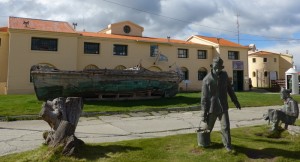 Then I spend the afternoon strolling along the few main streets of the city before visiting the Ushaia Prison Complex (the former jail). A penal colony for 580 convicts was planned to be built at Lapataia (not far from Ushuaia). Construction of the National Prison at the present site only began in 1902 and went on till 1920. In 1911, the Military Prison was merged with the jail in Ushuaia.
Then I spend the afternoon strolling along the few main streets of the city before visiting the Ushaia Prison Complex (the former jail). A penal colony for 580 convicts was planned to be built at Lapataia (not far from Ushuaia). Construction of the National Prison at the present site only began in 1902 and went on till 1920. In 1911, the Military Prison was merged with the jail in Ushuaia.
The jail, with the most prominent structure in Ushuaia, had five pavilions with 79 exterior facing cells each. The 380 cells were single, but the jail housed more than 600 convicts at one one. Convicts guilty of serious crimes were sent here. The jail had 30 different work area. Convicts worked for lifetime with a little salary and often outside the jail for building streets, bridges and logging. They even built a 25km-long railway in 1910 which became the southernmost railway in the world. In 1947, the jail was closed.
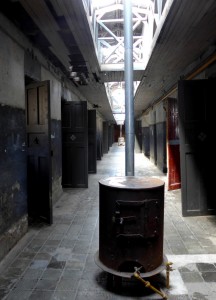 |
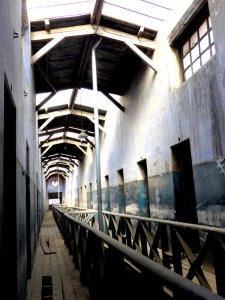 |
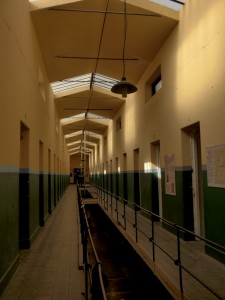 |
The jail is now a major tourist attraction housing several museums: Prison Museum, Maritime Museum and Art Gallery on the ground floor; Antarctic Museum, Old Time Ushuaia, Malvinas War (Falkland War with the UK), Police & Penitentiary Museum and Marine Art Museum on the first floor.
In the Antarctic Museum, there are 19 rooms with information on all Antarctic explorers of note. Most of the illustrations are bilingual. There is simply too much information which can be better arranged to make it more digestible for visitors. The narration on the Malvinas War is also different from the British story.
What I enjoy most is the empty wing without renovation: it is atmospheric especially with the shadows and the afternoon light coming through the roof. By 4pm, I have enough and get out of the jail for fresh air.
Within the next two hours, I get a return plane ticket to El Calafate for 2,906 peso and a 4WD adventure day trip to Lago Escondido and Lago Fagnano for 1,200 peso. At 6pm, I met up with friends from Ortelius – Diane (Canadian), Steve (American) and Volker (German) and had dinner at Trattoria Martin. I have spaghetti, a beer and a glass of red wine; all for 200 peso!
I am ready for bed but my first night on land turns out to be a horror. The young backpackers are inconsiderate and noisy. But my worst enemy is the ‘bugs’ – I am badly bitten with some 30 bites on my arms, neck, body and legs. I pay heavily for choosing the wrong place to stay.
March 14 Saturday: Hiking
I move to Posada del Penguino (next to Haush Hostel) the first thing in the morning. Here I have a big room with hot shower and toilet on the top floor with a sea view for 700 peso.
Today, I have an excellent self-guided hike to Laguna Esmeraldal, a place recommended by a backpacker I met at Haush. Joined by Steve, I take a minibus (200 peso return) and start the 4.8-km hike around 1pm. The path is well-signed but the section over two peat bog areas is difficult to navigate. Steve sinks in getting his feet wet and muddy. I hope the park authority can construct a short boardwalk in order to better preserve these two peat areas.
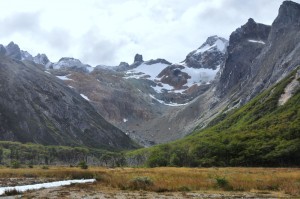 |
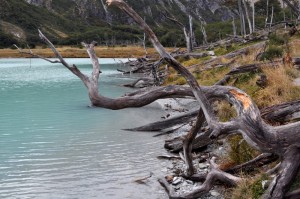 |
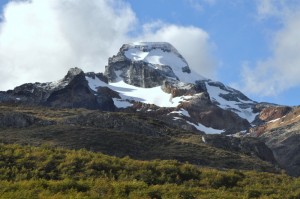 |
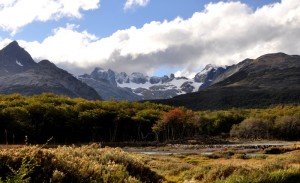 |
Despite the poor weather with heavy rain and gusty wind, I enjoy the scenery and exercise. The hidden lake surrounded by rugged peaks and snow-covered tops is stunning. Steve is fascinated by the emerald colour of the lake. We take the 6pm bus back to town.
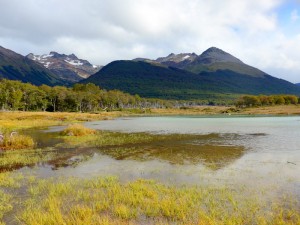 |
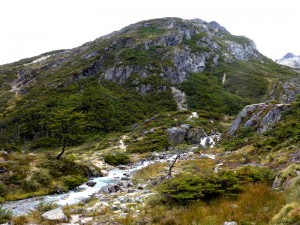 |
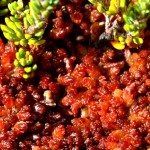 |
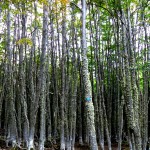 |
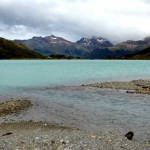 |
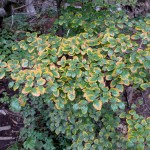 |
Steve, like many Americans, is not adventurous with food. We end up in the same restaurant. Anyway, I am easy and have a delicious seafood pasta. I have an excellent day and my first good sleep since leaving Bluff, New Zealand on February 11!
March 15 Sunday: Excursion
I set off at 9am in 4WD vehicle with four other tourists (a couple from Belgium and an 85-year old mom and her daughter from Buenos Aires). The weather is not good: it is raining.
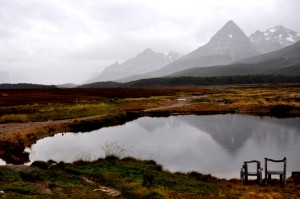 |
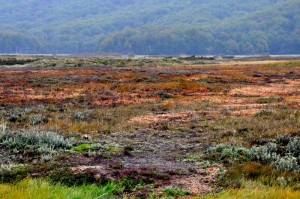 |
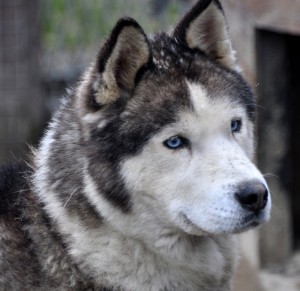 |
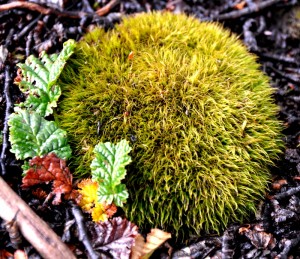 |
Argentina has good national highway: the 3000-km long highway from Ushuaia to Buenos Aires is well-paved. But in order to give us a 4WD experience, our driver sometimes takes the old steep dirt road that are no longer in use. I do not particularly enjoy driving on dangerous and steep paths – totally unnecessarily in my view. I should have paid less and take a conventional tour.
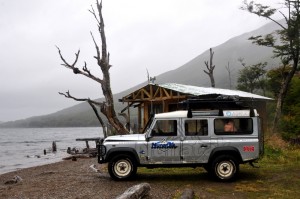 |
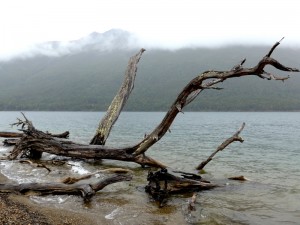 |
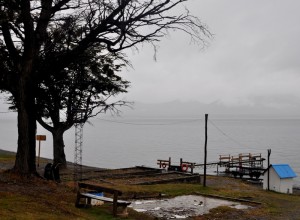 |
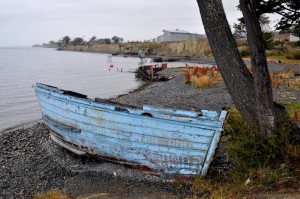 |
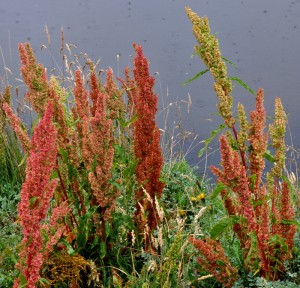 |
By the time we arrive at Lago Escondido (hidden lake-2 pictures on the top), it is raining heavily and unsuitable for canoeing. After staying less than 20 minutes, we move on and drive on the national highway all the way to Lago Fagnano (two pictures above). There are dozens of tourists from two coaches. After taking a picture, we are back in the 4WD and go straight to a cabin for a BBQ lunch. The sun comes out when I take a short walk around the cabin.
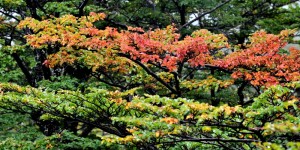 |
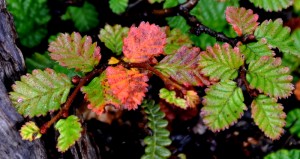 |
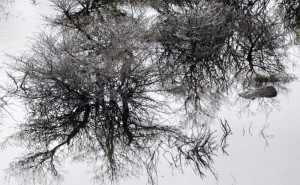 |
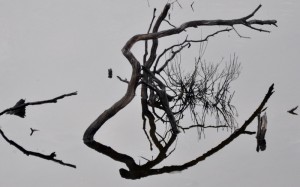 |
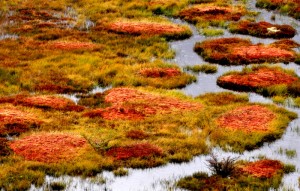 |
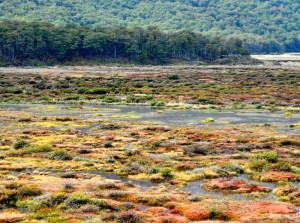 |
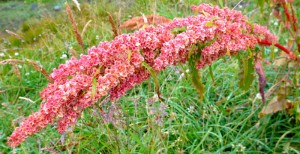 |
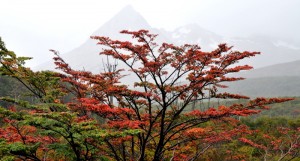 |
The nearby mountains and the valley which is a flavourite place for cross-country ski in winter are lovely. I have two pieces of excellent steak before we return to the city. When I look out from the window from my room at 4pm, I find sunshine, a blue cloudless sky and a stunning Beagle Channel planked by high mountains on three sides. I can also see a street fair going on in San Martin.
I am tired and take a short nap before heading to the fair. A large screen has been set up and the street is packed with people and young kids. I enjoy watching the jolly crowd: they make me happy too. I have not seen so many people since leaving Christchurch. After a wholesome lunch, I skip no dinner and spend the evening in sorting out photos.
March 16 Monday: Ushuaia – El Calafate – El Chaltén
My flight to El Chaltén leaves at 1:55pm. I spend the morning writing travel notes. Then I share a cab with Steve who flies back to the States. The short journey only cost 80 peso.
I arrive at the El Calafate airport shortly after 3pm but the minibus to El Chaltén does not leave till 4pm. I have a scenic 220-km ride to El Chaltén and find the arid steppe landscape eerie and stunning. The sunset gives the expansive steppe a magical touch too.
El Chaltén is Argentina’s capital of trekking offering several well-maintained self-guided treks in the Los Glaciares Park. The town is at the confluence of Rio de las Vueltas and Rio Fitz Roy. It is getting dark and I am keen to find somewhere close to the bus terminal.
I am lucky in spotting the sign ‘CerroTorre Cabanas‘. Paula, the receptionist speaks good English and gives me a cabana with two rooms and a kitchen for 700 peso a night. A good low season rate! She also lends me a pair of walking poles. I cook for myself and have wine, cheese, pasta with tuna and sardines for dinner every night till I move to Hosteria El Pilar on March 19.
March 17 Tuesday: Sendero al Fitz Roy (about 20km)
Today, my plan is to take the Laguna de los Tres trek, the most famous one in the Los Glaciares Park. I get on the 8am bus to Hosteria El Pilar, the starting point of my trek. Unfortunately, the bus wastes more than half an hour looking for missing or late passengers. Hence I cannot begin the hike till after 9:30am. The good thing is that I have a chance to look at the town from the bus.
Mt Fitz Roy (3,405m) isthe highest peak in the Los Glaciares Park and a landmark of Argentina. It was named in honour of Robert Fitz Roy, the captain of the Beagle, who had travelled up the Santa Cruz River in 1834 and charted large parts of the Patagonian coast. Its sheer granite faces make it difficult to climb and it was first scaled in 1952 by French Alpinists Lionel Terray and Guido Magnone. When the rising sun hits the peaks, they turn a rosy hue (I am lucky and see this phenomenon!)
The Laguna de los Tres trek is relatively easy except the 400m-ascent to Laguna de los Tres. I first walk through a lenga forest along Rio Blanco for about 5.5km with nice weather, sunshine and rainbows.
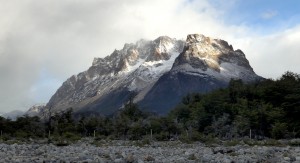 |
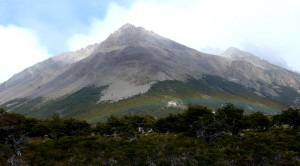 |
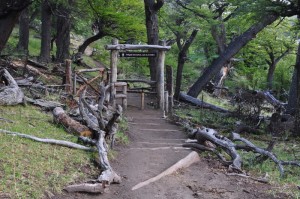 |
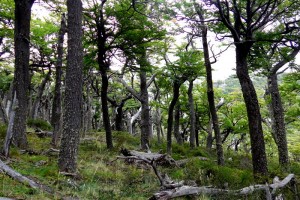 |
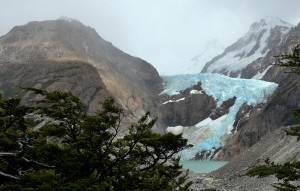 |
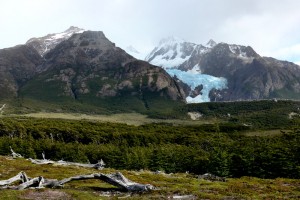 |
Owing to my knee problem, I walk slowly but manage to reach the ridge that affords a postcard view of the lake, glaciers and the towering Mt Fitz Roy. The weather here is unsettled, inclement and sometimes treacherous. This is exactly what happens today.
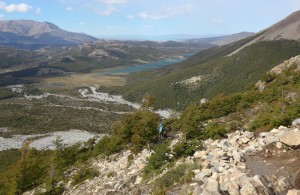 |
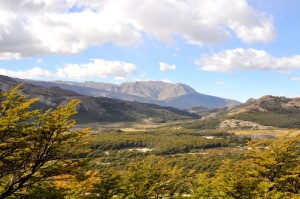 |
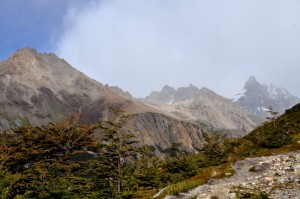 |
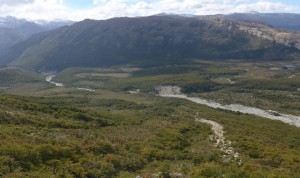 |
It is foggy with poor visibility: the peaks are hidden in the clouds. The ghastly wind is horrific and frightening. On two occasions, I have to take shelter behind a boulder. When the wind is gone, I jump out to take a photo, Suddenly gusty winds possibly between 70-90 knots arrive almost sweeping me off the ground. I have no where to hide: I can only sit on the ground holding firmly on a nearby rock for a few minutes. It is most scary!
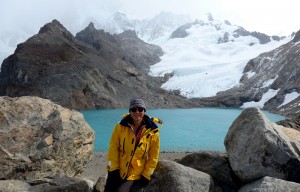 |
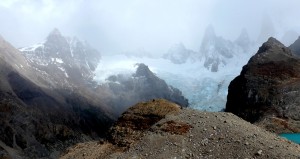 |
On the way down, the weather starts to clear up. I meet another hiker Marco from Brazil who accompanies me all the way back to El Chaltén. He must have worried about this old lady walking on her own! We stop at Laguna Capri and are back in El Chaltén at 6pm. We celebrate the day with a beer!
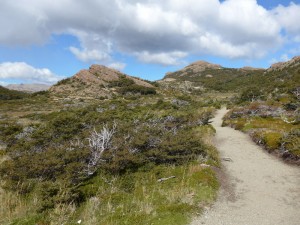 |
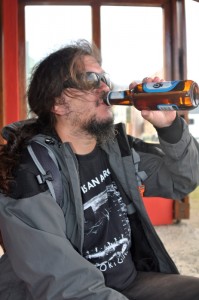 |
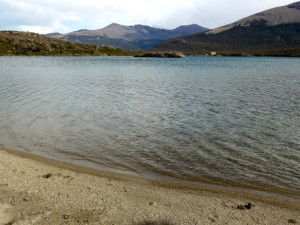 |
I have a great day despite the poor weather at the ridge. I must be totally exhausted: I drop into my bed at 8pm and sleep like a log for 12 hours!
March 18 Wednesday: Sendero al Torre (19km)
I get up at 8am after a wonderful long and deep sleep. I set off at 9am for a leisure and easy walk to Laguna Torre at the bottom of Cerro Torre (3,102m). The path follows the valley between two mountain ranges and is well- maintained. I enjoy a leisure hike without steep climb: the rocks are not slippery and the route is interesting with varied vegetation and landscape.
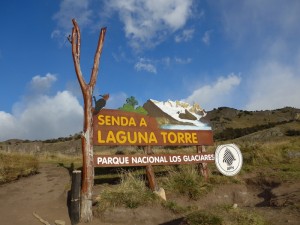 |
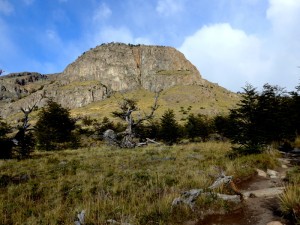 |
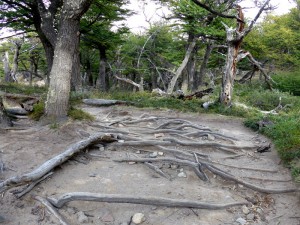 |
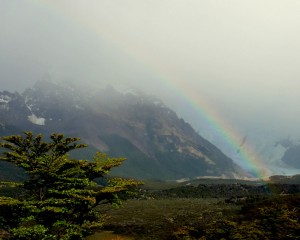 |
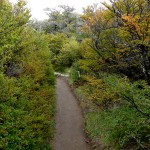 |
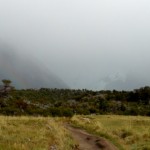 |
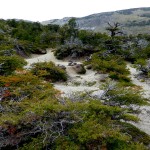 |
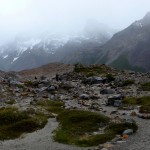 |
It starts to rain when I arrive at Laguna Torre. I do not attempt to walk another 2km along the ridge to Mirador Maestri which affords a commanding view of the glacier, the lake and Al Torres. But in view of the poor weather, I wonder whether there is anything to see!
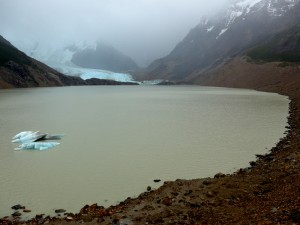 |
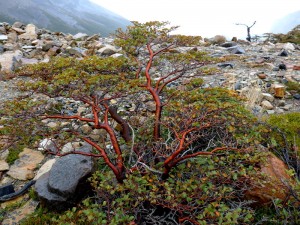 |
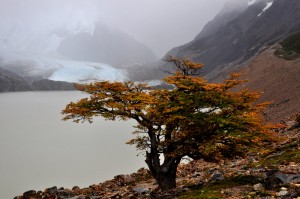 |
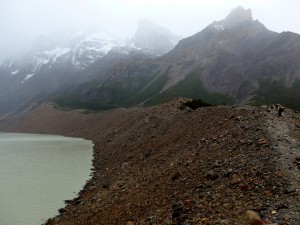 |
I head back the same way and am wet by the time I reach my cabana at 4pm. Anyway, I have a nice day walking with sunshine, rainbow and in the rain.


